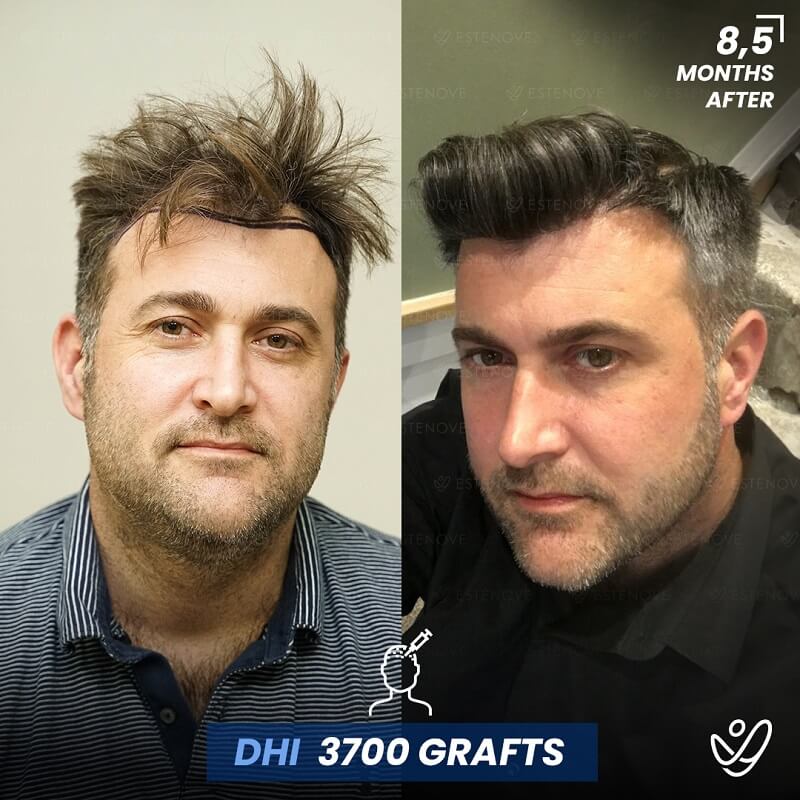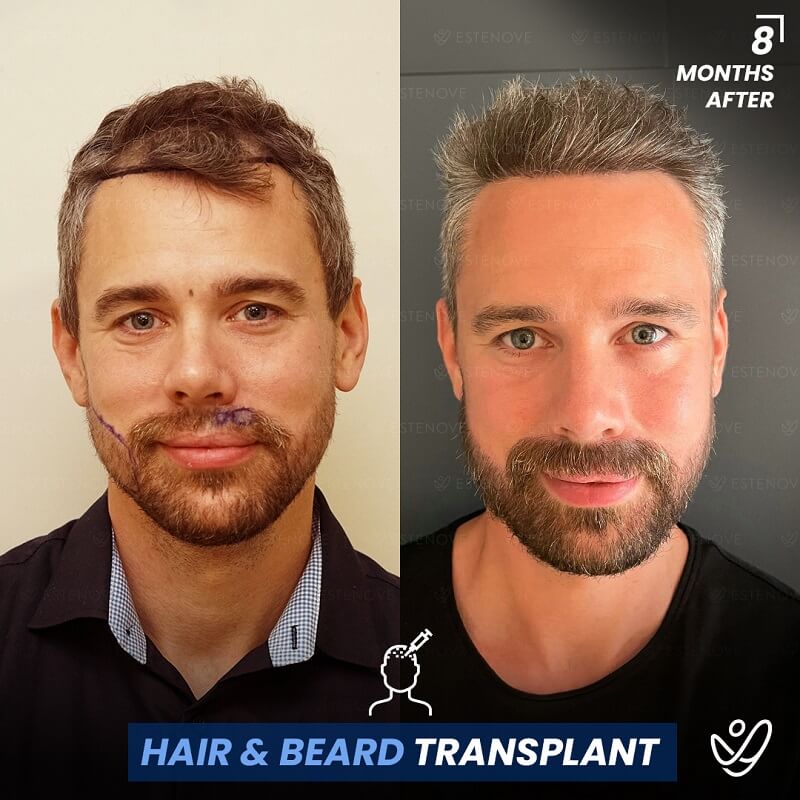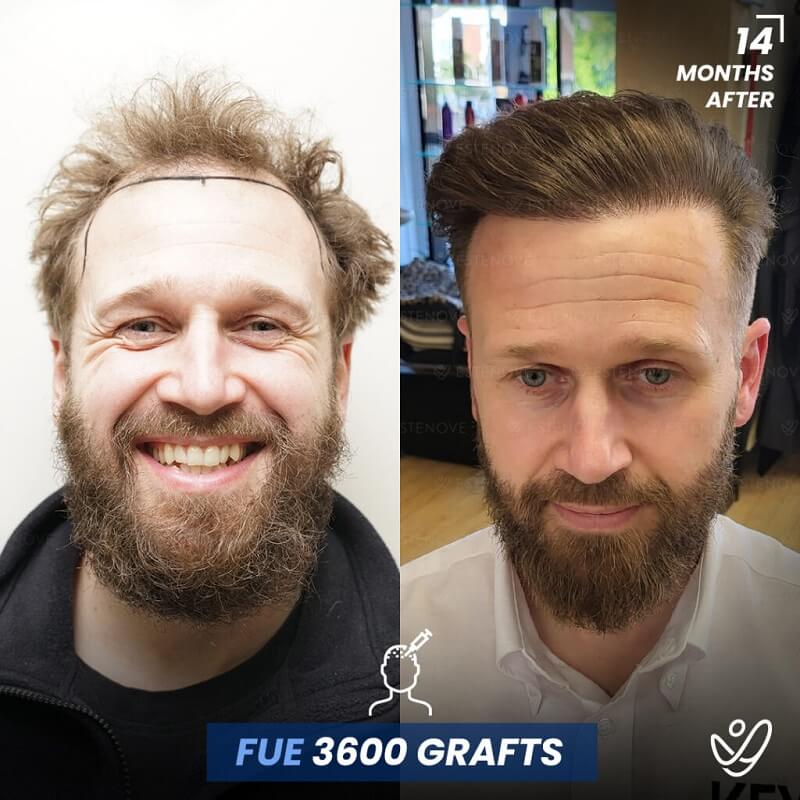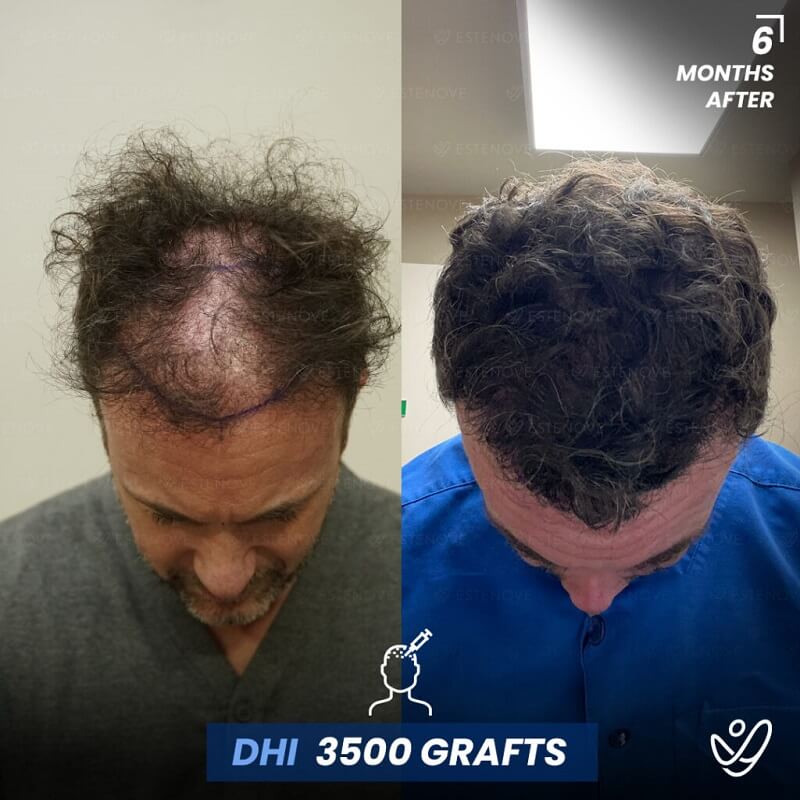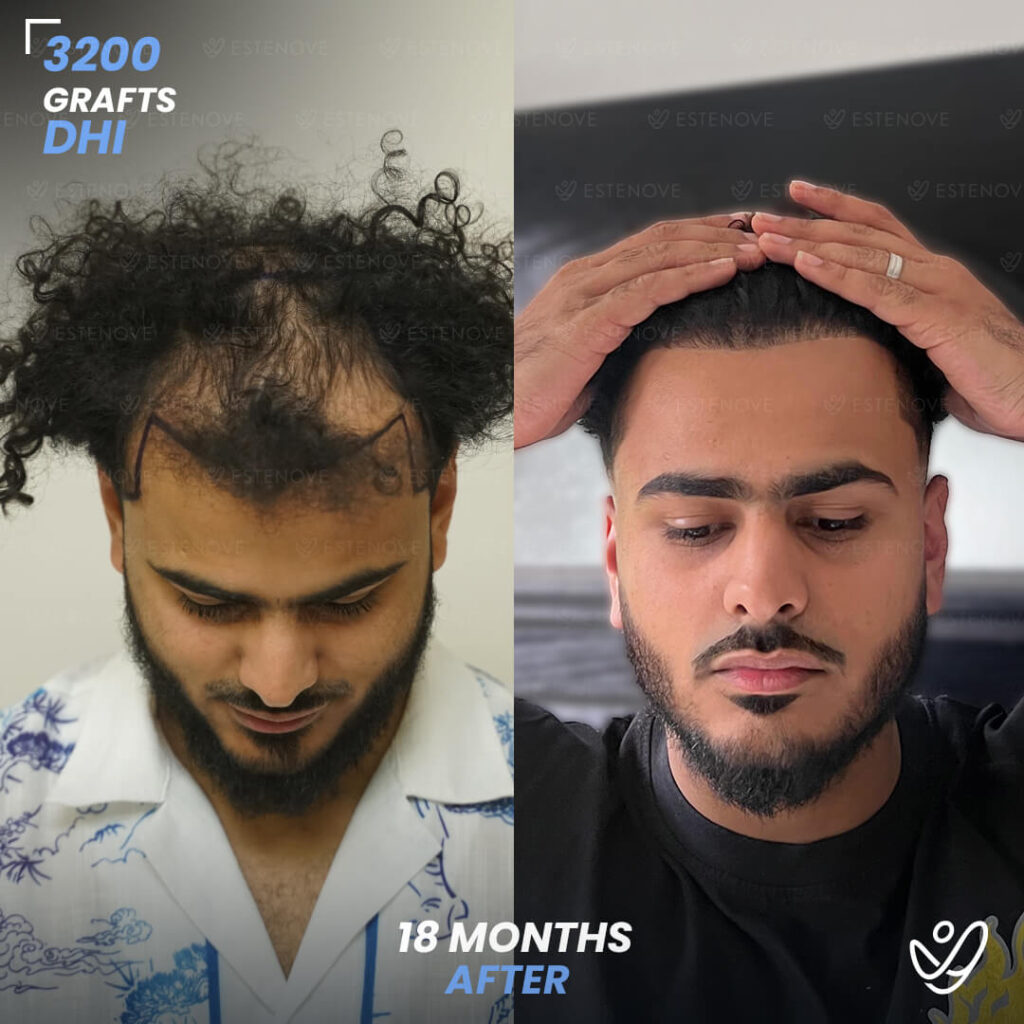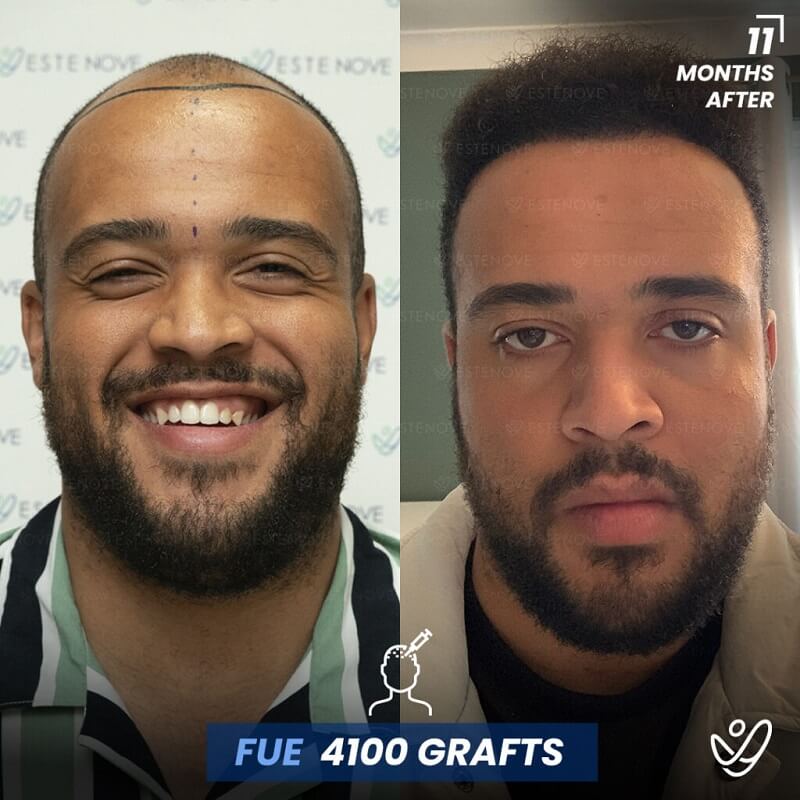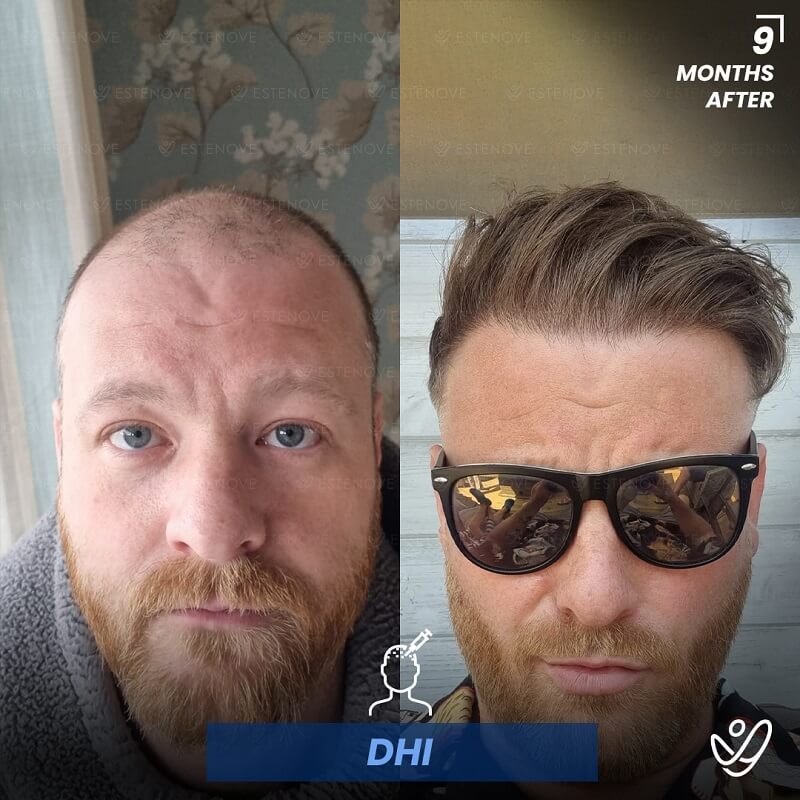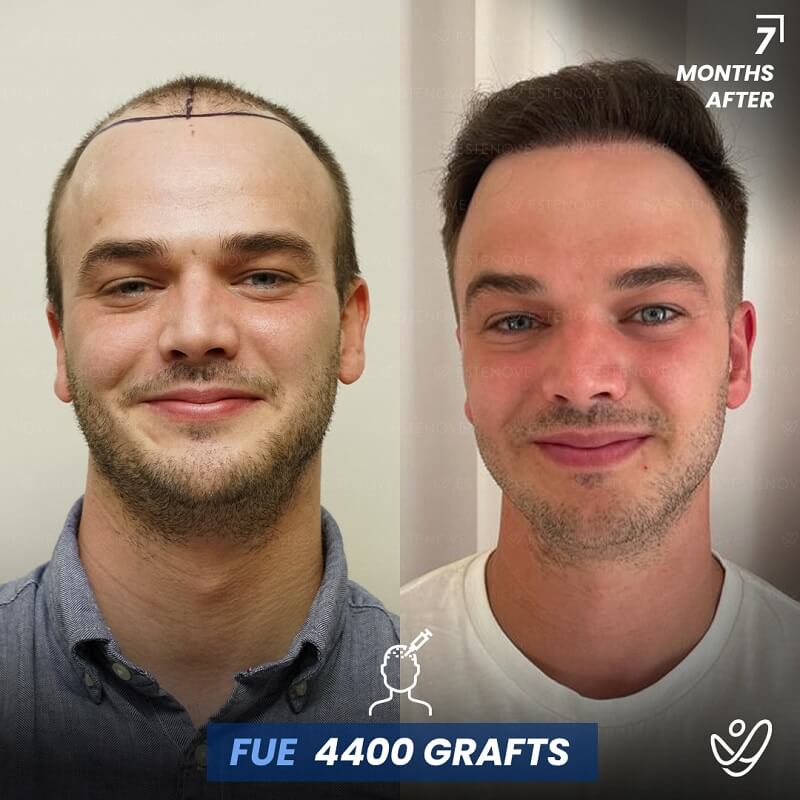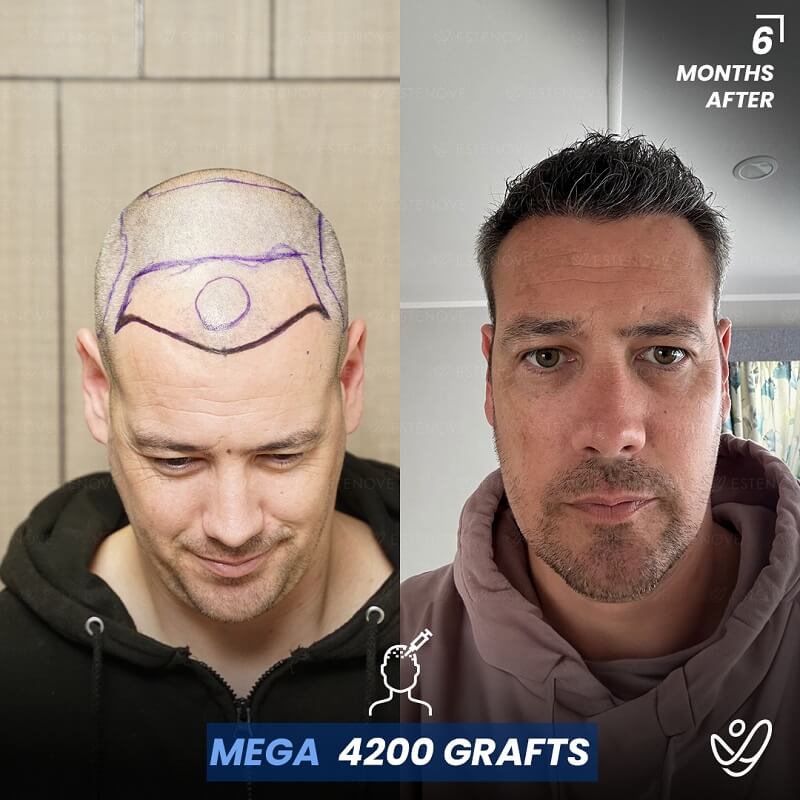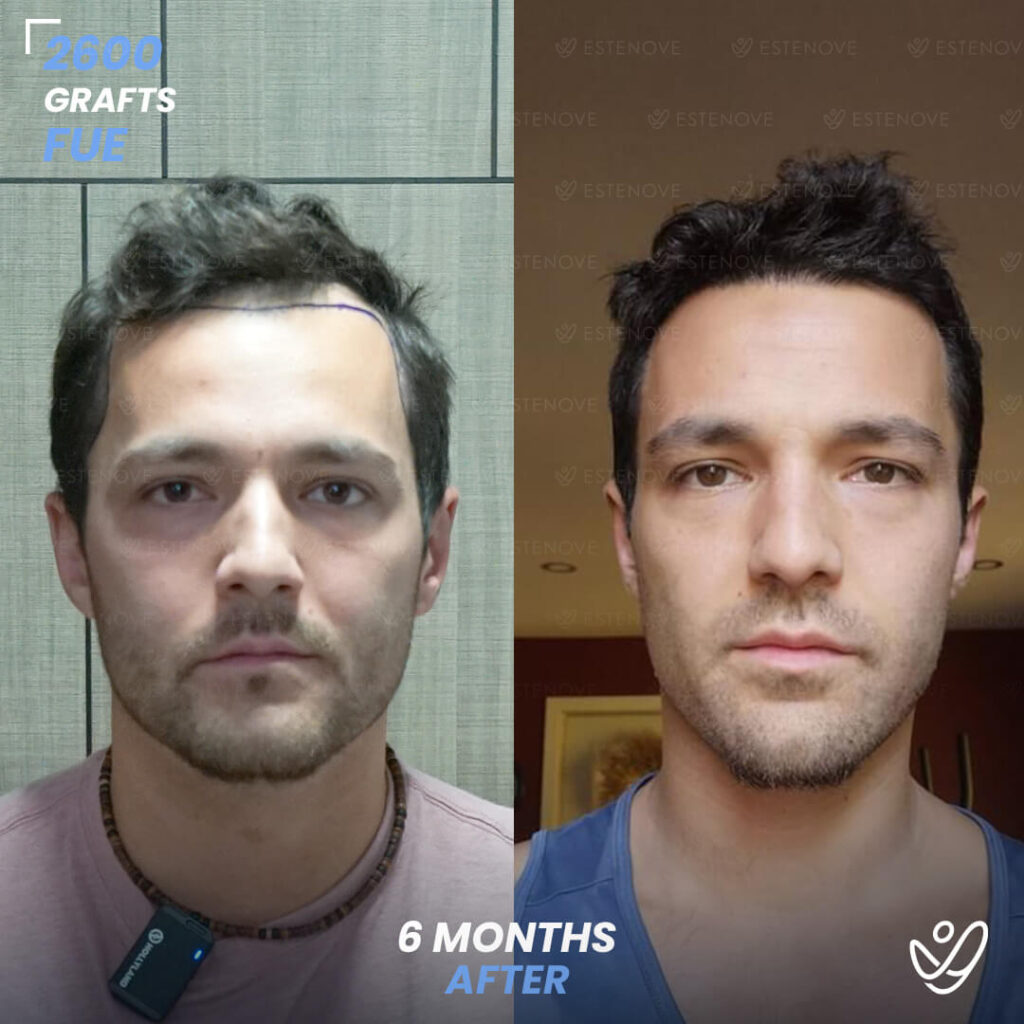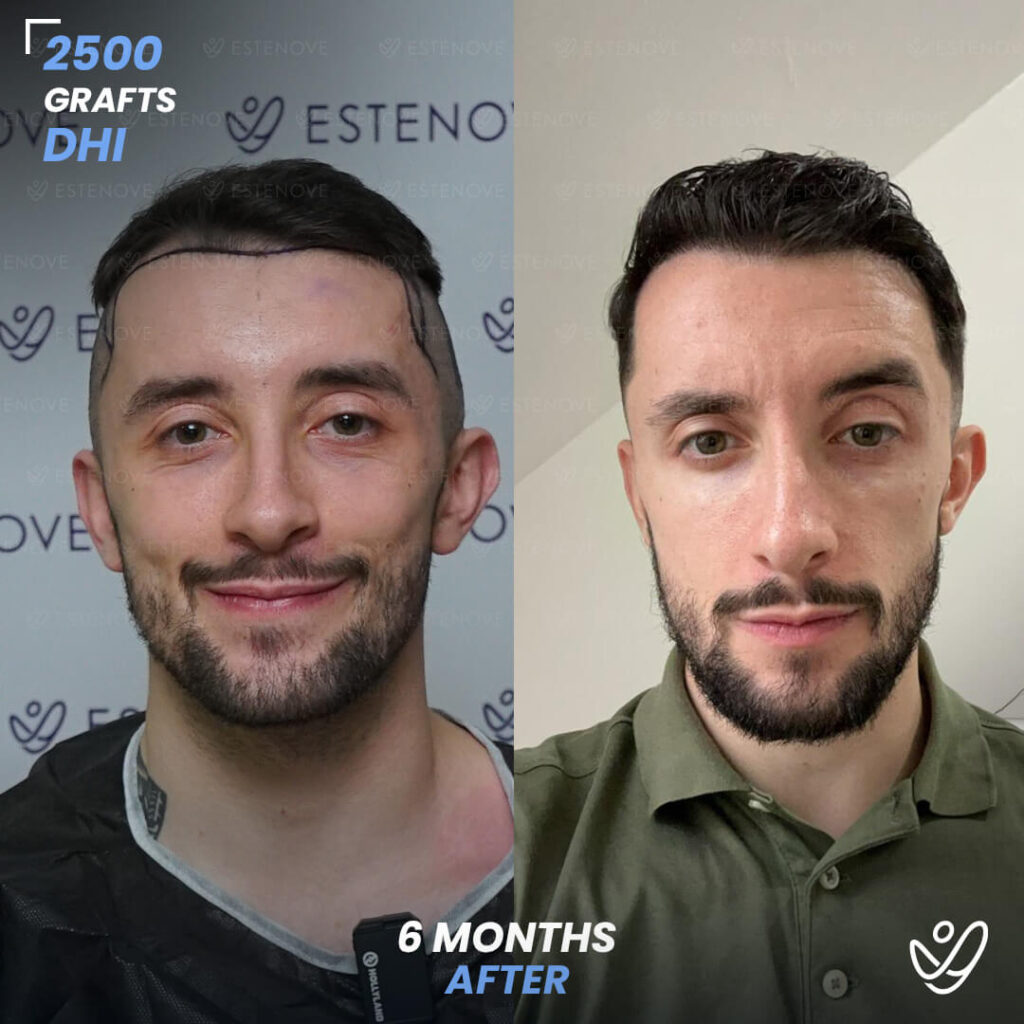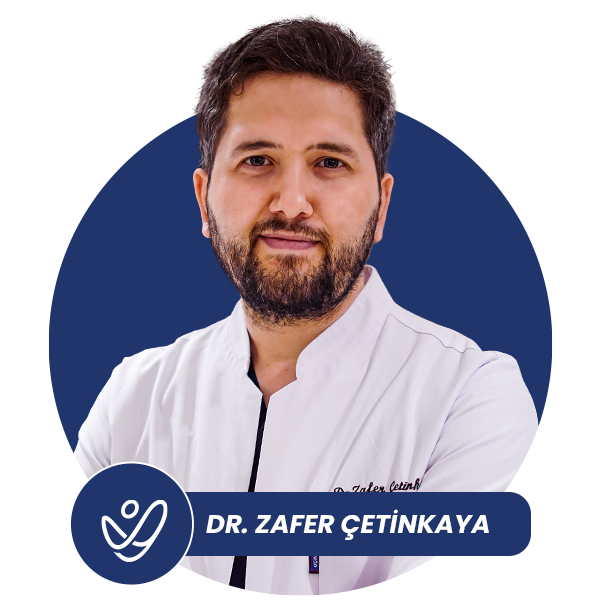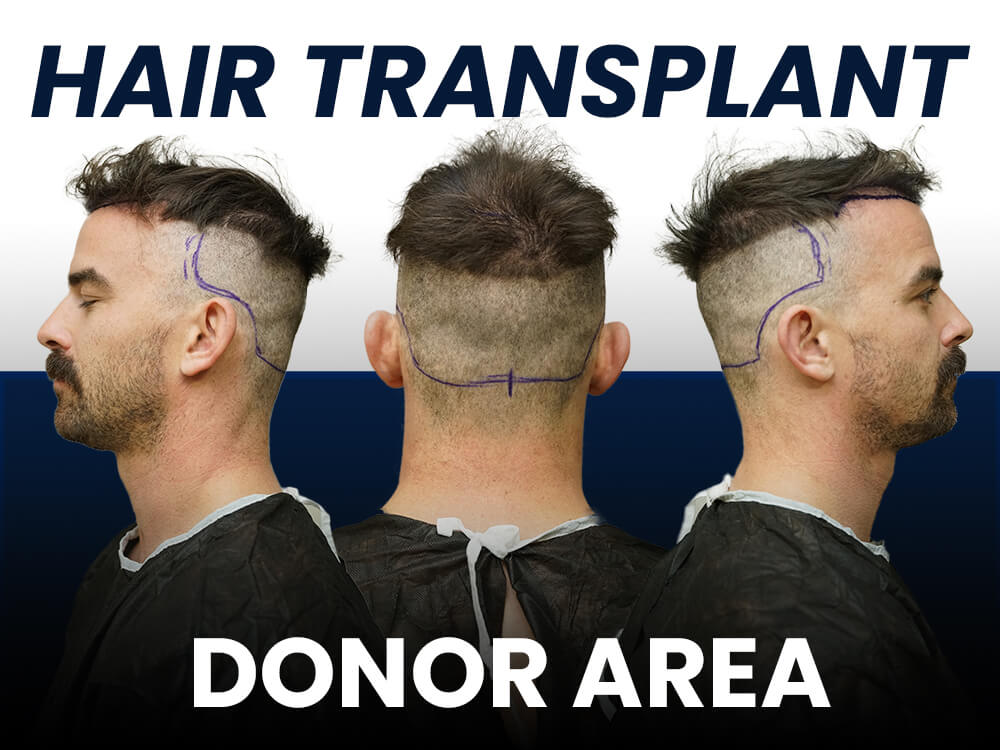
The donor area plays a crucial role in hair transplant procedures. Understanding its concept and significance is essential before undergoing the transplant process. This article will cover the various aspects of the donor area, including its role, factors determining its suitability, preparation, the transplant procedure itself, post-transplant care, and the potential risks and complications associated with it.
Understanding the Donor Area Concept
Before we dive into the specifics, let’s comprehend what the donor area entails. In hair transplant surgery, the donor area refers to the region of the scalp from which healthy hair follicles are extracted for transplantation. This area typically possesses ample hair density, making it an ideal source of grafts for transplantation.
When considering the donor area, it’s essential to understand that not all regions of the scalp are suitable for harvesting hair follicles. The back and sides of the scalp are commonly preferred as donor areas due to their stable hair growth patterns and resistance to the hormone dihydrotestosterone (DHT), which is responsible for hair loss in genetically predisposed individuals.
The Role of Donor Area in Hair Transplant
The donor area’s role is paramount in ensuring successful hair transplantation outcomes. It provides the donor hair follicles, which are genetically resistant to hair loss, ensuring the longevity of transplanted hair. The consistency and quality of the donor area’s hair follicles greatly influence the overall aesthetic results.
Moreover, the donor area’s characteristics can impact the number of grafts that can be harvested in a single session. A skilled hair transplant surgeon will strategically plan the extraction process to maximize the donor area’s potential while ensuring natural-looking results for the recipient area.
Factors Determining a Good Donor Area
Several factors determine what constitutes a good donor area. Hair density, thickness, and texture are crucial considerations. Additionally, the stability of the donor area and its potential to yield sufficient hair grafts play a vital role. During the initial consultation, a hair transplant specialist will assess these factors to determine the suitability of the donor area.
It’s important to note that the donor area’s characteristics can vary from person to person based on genetic predisposition, age, and overall health. Factors such as previous hair transplant procedures, scalp laxity, and underlying medical conditions can also influence the quality of the donor area. Understanding these variables is key to achieving optimal results and patient satisfaction in hair transplant surgery.
Preparing for Hair Transplant: The Donor Area
Proper preparation of the donor area is crucial for a successful hair transplant procedure. It involves a comprehensive medical evaluation and specific pre-operative instructions to optimize the condition of the donor area.
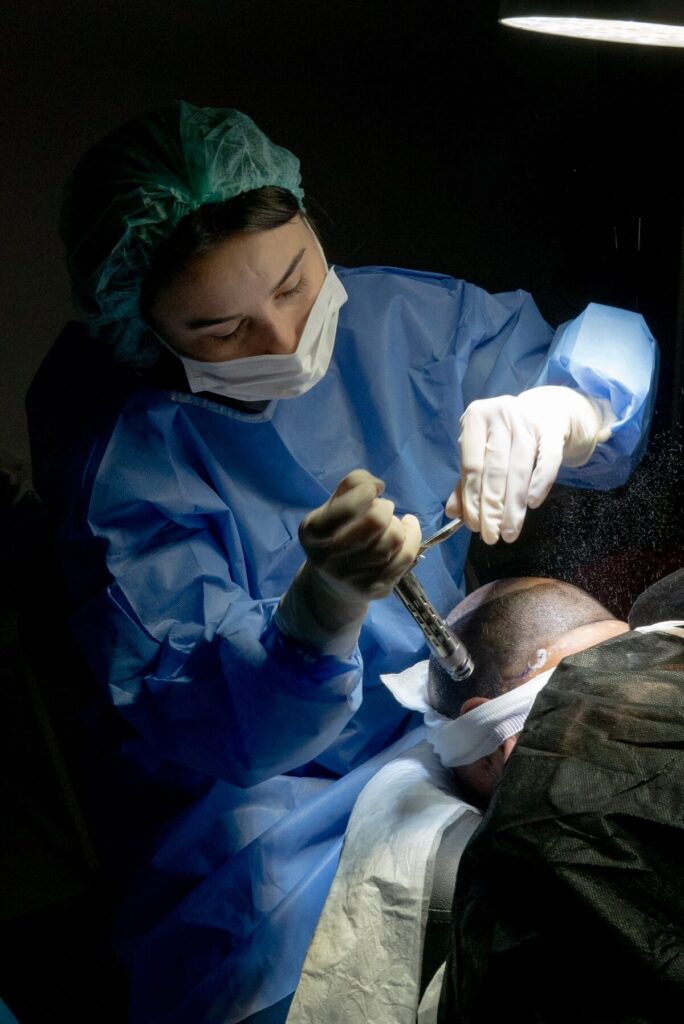
Hair follicles are being extracted from donor area
Ensuring the donor area is in optimal condition is essential for the success of the hair transplant. Apart from the medical evaluation, maintaining a healthy scalp through proper nutrition and hydration can also play a significant role in the outcome of the procedure. Adequate hydration and a balanced diet rich in vitamins and minerals can promote hair health and facilitate the healing process post-transplant.
Medical Evaluation of the Donor Area
Prior to the transplant, a thorough medical evaluation of the donor area will be conducted. The assessment will include an examination of hair density, scalp laxity, and overall hair health. The transplant specialist will also consider any existing medical conditions that may affect the donor area’s suitability for transplantation.
Furthermore, the medical evaluation may involve assessing the blood supply to the scalp to ensure that the donor area has ample circulation for successful graft survival. Adequate blood flow is crucial for the nourishment and growth of the transplanted hair follicles, making it a critical aspect of the evaluation process.
How to Prepare Your Donor Area for Transplant
Follow the guidance of your transplant specialist to prepare your donor area adequately. This may involve refraining from using certain haircare products or medications, as advised. Additionally, they might recommend gentle scalp massages or specific haircare routines to optimize the condition of the donor area before the procedure.
In some cases, the transplant specialist may recommend scalp exercises to improve scalp laxity, making it easier to harvest the donor grafts with minimal tension. These exercises can help prepare the scalp for the transplant procedure, ensuring a smoother extraction process and potentially reducing the risk of complications during the surgery.
Calculate the number of grafts needed for your hair transplant and get an estimated cost for various destinations: Try graft calculator
The Hair Transplant Procedure: Focusing on the Donor Area
During the hair transplant procedure, extracting hair follicles from the donor area requires precision and expertise. Several techniques exist for this purpose, including follicular unit extraction (FUE) and strip harvesting.
Extraction Techniques from the Donor Area
Follicular unit extraction (FUE) involves the extraction of individual hair follicles directly from the donor area. This technique ensures minimal scarring and allows for the precise harvesting of healthy grafts. Another method, strip harvesting, involves removing a thin strip of the scalp from the donor area, from which the grafts are subsequently extracted.
Both FUE and strip harvesting have their advantages and considerations. FUE is known for its minimally invasive nature, making it a preferred choice for those concerned about visible scarring. On the other hand, strip harvesting can be more efficient for extracting a larger number of grafts in a single session, which may be beneficial for individuals requiring extensive hair restoration.
Ensuring the Viability of Donor Hair Follicles
Once the hair follicles are extracted from the donor area, they must be handled with utmost care to ensure their viability for transplantation. Specialized solutions and techniques are used to maintain the grafts’ survival rate, ensuring optimal results.
After extraction, the harvested hair follicles are meticulously examined under magnification to assess their quality and viability. Only the healthiest and most robust follicles are selected for transplantation to maximize the chances of successful hair growth in the recipient area. This meticulous selection process is crucial for achieving natural-looking results and long-term hair density.
Does Donor Hair Grow Back?
Yes, donor hair typically grows back after a hair transplant. The hair follicles are taken from areas of the scalp that are genetically resistant to hair loss, usually from the back or sides of the head. These donor follicles are moved to areas where hair has thinned or is balding.
Here’s what happens after harvesting donor hair:
- Healing of the Donor Area: After the procedure, the small incisions made in the donor area heal quickly. The hair in the donor area may shed temporarily, but the follicles remain intact, and new hair growth begins.
- Hair Growth in the Donor Area: Within a few months, the donor hair will begin to regrow. By 3-6 months, new hair growth in the donor area is usually visible, with the area returning to its normal appearance. Check out hair transplant results month by month for detailed timeline.
- Minimal Visible Scarring: If techniques like FUE (Follicular Unit Extraction) are used, the donor area typically shows little to no scarring, as individual hair follicles are removed without large incisions. In cases of FUT (Follicular Unit Transplantation), a linear scar may form, but it’s often hidden by the surrounding hair.
Post-Transplant Care for the Donor Area
After the transplantation procedure, proper care of the donor area is essential to ensure successful healing and long-term results.
Ensuring the donor area heals properly is crucial for the overall success of the hair transplant procedure. The healing and recovery process of the donor area may vary from person to person, but typically it takes a few weeks for the area to fully heal. During this time, it is important to follow the transplant specialist’s instructions diligently to promote optimal healing and minimize the risk of complications.
Visit Hair Transplant Recovery Month by Month for detailed overview of the process.
Healing and Recovery of the Donor Area
The donor area will require time to heal and recover. The transplant specialist will provide instructions on how to keep the area clean and prevent infection. It is crucial to follow these post-operative care guidelines to minimize any potential complications.
During the initial healing phase, it is normal to experience some redness, swelling, and tenderness in the donor area. These symptoms typically subside within a few days, but it is essential to avoid any activities that may put strain on the area to facilitate proper healing.
Long-term Care and Maintenance of the Donor Area
Even after complete healing, it is important to maintain the overall health of the donor area. This includes regular haircare routines, including gentle washing and conditioning, avoiding excessive heat styling, and protecting the area from prolonged sun exposure.
In addition to following a healthy haircare routine, it is advisable to schedule regular follow-up appointments with the transplant specialist to monitor the progress of the donor area. These appointments allow the specialist to assess the healing process, address any concerns, and provide guidance on long-term maintenance to ensure the best possible outcome of the hair transplant.
Potential Risks and Complications in the Donor Area
While hair transplant procedures have a high success rate, it is essential to be aware of potential risks and complications that may arise in the donor area.
When considering a hair transplant, it’s crucial to understand that the donor area plays a significant role in the overall outcome of the procedure. The donor area is typically located at the back or sides of the scalp, where hair follicles are genetically resistant to balding. These follicles are carefully extracted and transplanted to the recipient area to promote new hair growth.
Common Side Effects in the Donor Area
Temporary side effects such as pain, redness, and swelling are common in the donor area. These subside gradually within a few days to weeks after the procedure. It is important to follow the post-operative care instructions provided by the transplant specialist to manage and alleviate these side effects effectively.
Additionally, some individuals may experience itching or numbness in the donor area as the healing process progresses. These sensations are normal and typically resolve on their own over time. Maintaining proper hygiene and avoiding any strenuous activities can help prevent further discomfort in the donor area.
Addressing Complications in the Donor Area
In rare cases, complications such as infection or abnormal scarring may occur in the donor area. It is crucial to promptly contact the transplant specialist if any concerns arise. They will be able to assess the situation and provide appropriate treatment, ensuring the best possible outcome.
Furthermore, individuals with a history of keloid scarring or poor wound healing should inform their transplant specialist before the procedure. This information can help the specialist tailor the treatment plan to minimize the risk of complications in the donor area and optimize the overall results of the hair transplant.
Overall, understanding the significance of the donor area in hair transplant procedures is vital for individuals considering this treatment option. By adhering to the pre- and post-operative instructions provided by a qualified transplant specialist, you can maximize the potential of your donor area and achieve successful and natural-looking results.
Fill the form below to get free consultation

